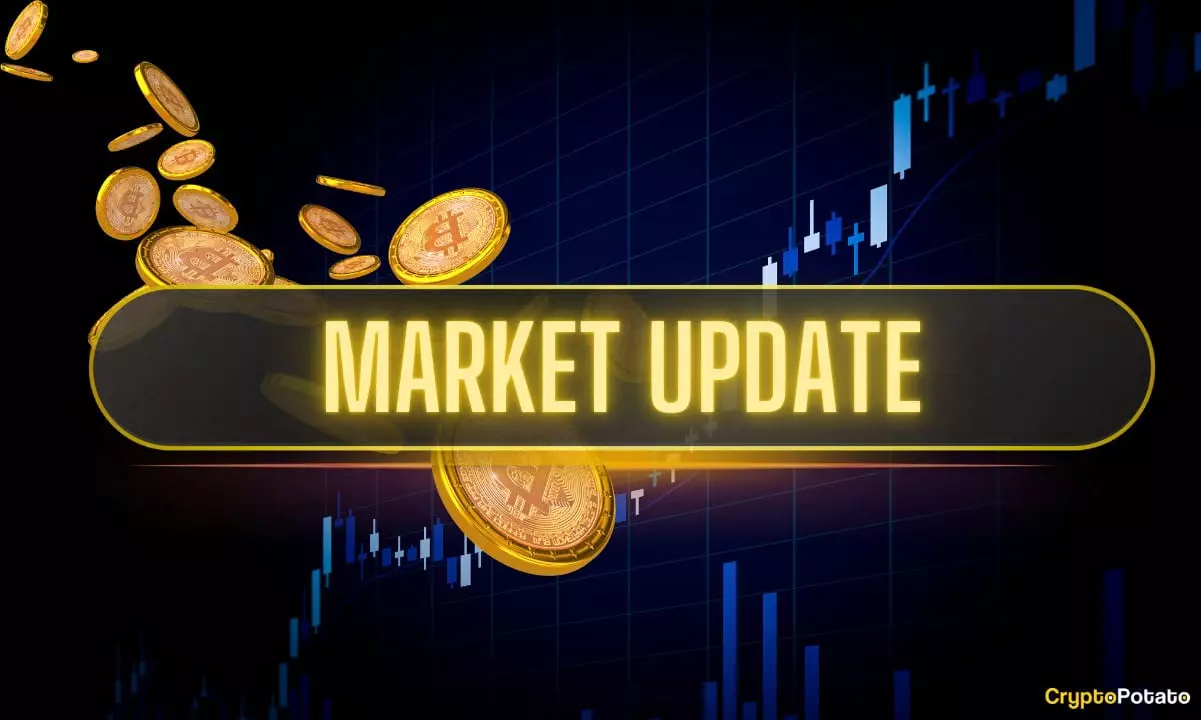Months of stagnation and disillusionment have finally come to a halt for Bitcoin investors, who have long awaited a surge to shatter previous records. The moment arrived with a spectacular breach of its all-time high, touching nearly $112,000 before being met with typical market volatility. This movement is not merely a statistical feat; it’s a psychological turning point. Investors have felt the tremors from past price crashes, and those experiences have instilled a cautious optimism that seems to permeate the market now that BTC has re-established its dominance.
However, the road to this new pinnacle has been fraught with challenges. Time and again, the $107,000 resistance proved formidable, compelling traders to reconsider their positions. A surge of bullish sentiment eventually overcame the bears, enabling a decisive breakout on what the crypto community now affectionately refers to as “Bitcoin Pizza Day.” The significance of the day is not lost on those familiar with the history of cryptocurrency—what better way to celebrate than by marking an event that symbolizes both indulgence and risk-taking?
Political Signals in a Digital World
In an era where political statistics often reverberate through financial markets, the latest tariff threats from President Trump introduced fresh waves of uncertainty. His warning of a 50% tax on all countries in the European Union emerged amidst this backdrop of cryptocurrency excitement, causing Bitcoin to retract by a noteworthy $3,500 in a matter of hours. Despite this volatility, BTC managed to stabilize around $109,000—indicating a resilience that suggests the digital asset is maturing.
While some may view this response as mere market knee-jerk reaction, the underlying implications are worth examining. The Bitcoin realm thrives on decentralization, yet geopolitical moves can exert significant influence. For many enthusiasts and investors within a center-right context, such fluctuations could raise important questions: does the market genuinely reflect a free economy, or is it increasingly susceptible to external pressures? With political wind shifts capable of dragging Bitcoin prices down, the asset’s autonomy appears compromised.
The Rise of Competitors in a Saturated Market
The crypto landscape has become more competitive, with altcoins like HYPE showcasing extraordinary gains. Rising over 30% in just a week, HYPE’s performance underscores the volatility present in the digital currency sector. While Bitcoin has recently climbed back towards dominance, the emergence of these new contenders complicates the narrative that BTC is the ultimate blockchain asset. This competition raises ongoing debates about investment strategy: is it wise to remain loyal to Bitcoin, or are there justifiable reasons to explore alternative assets?
JPMorgan Chase, Citigroup, Wells Fargo, and Bank of America are reportedly conjuring plans for a joint stablecoin venture to streamline transactions. The implications for Bitcoin are profound; could traditional finance now be exerting influence over what was once reserved for alternative currency? As these banking giants aim to modernize their infrastructure, legacy banks might unwittingly bolster cryptocurrency’s credibility, or perhaps inadvertently challenge its position, symbolizing a complex interplay between traditional and digital finance.
On-Chain Metrics and the True Health of Bitcoin
While debates rage on about Bitcoin’s future, on-chain metrics indicate a healthier rally than January’s peak. The reality is that BTC’s trajectory is far more stable than its past erratic climbs. The threat of a crash looms, but it’s tempered by a community now capable of critically analyzing trends rather than simply following fear and euphoria. As the cryptocurrency world refines its methodologies, it sheds light on inherent market behaviors, making it an arena for astute investors.
However, caution is warranted. The allure of having institutional investors, like BlackRock’s Spot Bitcoin ETF, come to play has raised concerns regarding potential centralization within a decentralized ecosystem. Social media channels are alive with discussions—does convergence of major players threaten the very ethos of cryptocurrency? As bullish sentiment remains rampant, skepticism lies just beneath the surface, hanging like a dark cloud over the new order of digital assets.
The Bigger Picture
Above the tumult of price fluctuations and community debates lie principles of innovation and change. The Bitcoin saga reflects not only economic trends but cultural shifts toward digital finance. This isn’t merely about numbers and charts; it’s about the possibilities that a decentralized economy offers. As we watch Bitcoin navigate through political pressures, institutional investments, and rising altcoins, one overarching theme prevails: the demand for alternative financial systems is not just a trend—it’s the future. The current rally is a beacon for those who have previously doubted, a reminder of the resilience that both investors and the technology behind Bitcoin possess. It’s a testament to humanity’s incessant pursuit of autonomy in an increasingly regulated world.

